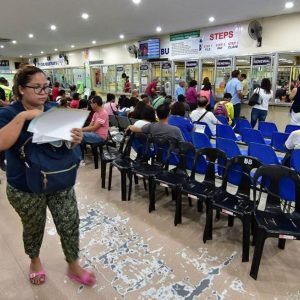
PhilHealth, the government’s health insurance corporation, is at the center of a heated debate following the removal of its ₱74-billion subsidy from the 2025 national budget. This decision, made amidst rising health costs and economic challenges, has sparked concern among lawmakers, health advocates, and the general public about the future of healthcare services in the Philippines.
The Department of Health (DOH) has assured the public that PhilHealth has a reserve fund of ₱150 billion, claiming this will sustain operations even without the subsidy. However, critics argue that relying solely on this reserve could jeopardize healthcare access, especially for the country’s poorest citizens. Adding to the uncertainty, a congressman has called for an audit of PhilHealth’s reported ₱700-billion reserve fund, questioning the accuracy and transparency of its financial management.
Senator Bong Go, a staunch advocate for healthcare, described the removal of the subsidy as “anti-poor.” He emphasized that the ₱74 billion allocated in previous years was essential for expanding the Universal Health Care program, which aimed to provide free or affordable medical services to millions of Filipinos. Without it, he warned, marginalized sectors could face reduced access to critical health services.
Meanwhile, Senator JV Ejercito sought to ease public fears about possible premium increases, stating that such concerns are unwarranted. He emphasized the need for PhilHealth to balance financial sustainability with its mandate to deliver affordable healthcare services to all members, particularly amid economic hardships.
PhilHealth’s reserve fund of ₱150 billion, while substantial, is seen by many as insufficient to cover the anticipated demands of 2025 and beyond. Critics note that the absence of additional government funding could result in diminished services, longer wait times, and fewer benefits for members, especially with inflation and healthcare costs on the rise.
Calls for reform and greater transparency in PhilHealth’s operations have intensified. Legislators and health advocates have raised concerns about past mismanagement within the agency, urging a thorough review of its financial records to ensure that its reported ₱700 billion is accurately accounted for and used effectively.
The DOH insists that the decision to cut the subsidy aligns with efforts to promote fiscal discipline, arguing that PhilHealth’s reserves are robust enough to meet its obligations. However, this assurance has done little to allay fears among the public. Many believe that without government funding, the most vulnerable Filipinos could bear the brunt of the financial strain.
The controversy highlights broader concerns about the government’s spending priorities. Critics question why healthcare funding is being cut while other sectors continue to receive substantial allocations. They argue that the health of millions should take precedence, particularly in a country still grappling with the long-term effects of the COVID-19 pandemic.
With ₱74 billion in subsidy withdrawn and a reliance on the contentious ₱150-billion reserve fund, the spotlight is now on PhilHealth to demonstrate financial efficiency. Stakeholders across the political spectrum are calling on the government to reconsider its decision and ensure the health and well-being of the Filipino people remains a top priority. As the nation heads into 2025, the public anxiously awaits decisive action to secure PhilHealth’s future and, by extension, the healthcare services that millions depend on.








